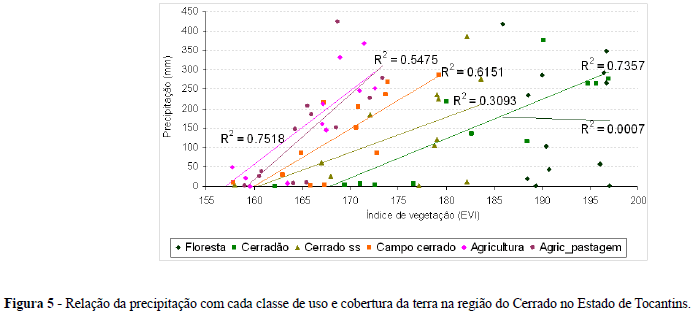Precipitation is one of the main factors that determine the seasonal dynamics of the vegetation in tropical savanna areas, as the Brazilian cerrado. In this work the relationship of the seasonal precipitation with the seasonal behavior of the land use and land cover (LULC) types, mainly savannah physiognomies of the Tocantins State, was investigated. We analyzed the savanna seasonal dynamics, including forest and converted areas, with MODIS/TERRA VI (vegetation indexes) satellite measurements from January to December 2004 and daily precipitation of 2004 and daily precipitation series from 1969 to 2005. The results of the precipitation analysis show that the study areas exhibited a high seasonality with a dry season from May to September. The analysis of the VI showed that the seasonal dynamic of the savanna formations and the converted areas were similar. The seasonal pattern of these LULC types follows the precipitation pattern, when the lowest VI values were recorded in August of 2004. Differently of these LULC types, forest formations do not fitted to the precipitation pattern, this LULC type keep similar VI values along year with light decrease in September of 2004.
Land use and land cover; vegetation indexes; precipitation; seasonal vegetation of tropical savanna








